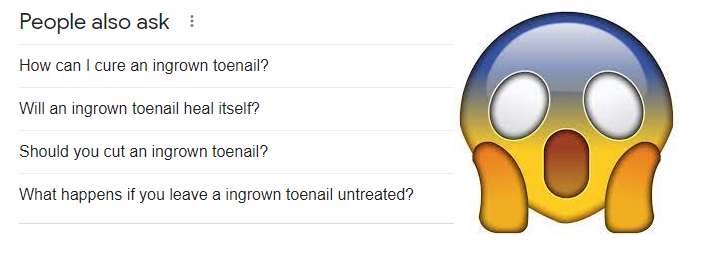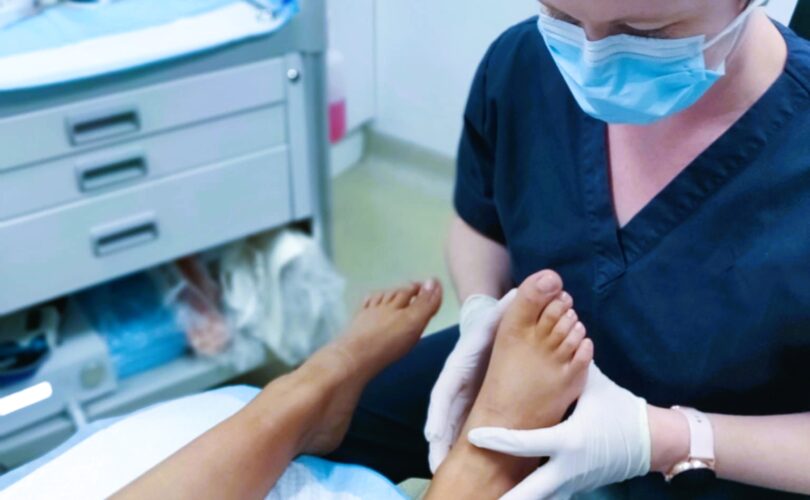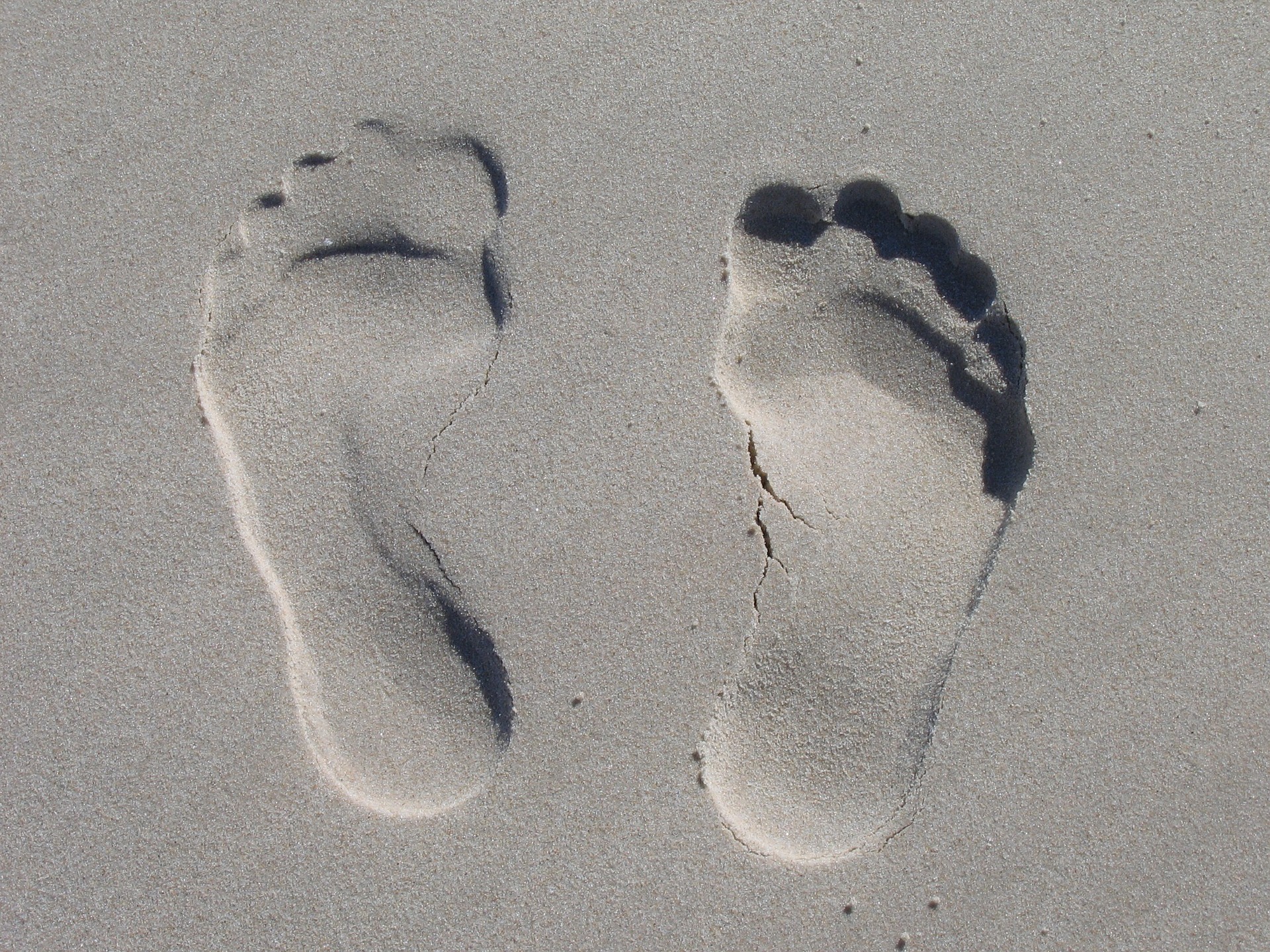I think I have an ingrown toenail… but what even is an ingrown toenail?
Before I put my nerdy podiatrist hat on and bamboozle you with big words about feet, I want to acknowledge that I’ve been a bit slack on the blog writing. Why is that? Well, we got busy! Thanks to some loyal clients, GP referrals and lots of positive word of mouth recommendations, the patient books began to really start filling up. For a few months it was pretty hectic, trying to stay on top of running the business as well as seeing clients. And then just the general day-to-day madness of having a young family… I let the blogs fall down the wayside. But we’re getting the hang of it now and I don’t spend every spare minute trying to straighten out the website or understand the accounting software (OK, I’ve kind of given up on that, I just accept that it does what it does and seems to work).
I’ve wanted to write about this for some time, because ingrown toenails are the toothache of the podiatrical world: a very common complaint that can make the lives of people suffering from it miserable. The good news is though, that they are normally very treatable, so read on to see what we can do about them (and how you might prevent them in the first place)
IMPORTANT NOTICE
Before I go any further I have to stress that the information below is general in nature and is not, and should not be considered, clinical or medical advice. Please always consult with a medical professional.
From a podiatrist’s point of view, there are – broadly speaking – two “types” of ingrown nail. Both are painful, red, hot and mucky. Putting any type of closed shoe on is impossible. These nasty little numbers can have you out of bed at 2am, bleary-eyed and reaching for the nail clippers about to perform bathroom surgery.
Nail spicule ingrown nails or Onychocryptosis.
Nail spikes (spicule = spike. Apparently it comes from a Latin word that means “ear of grain” which is spiky) are caused by one of two things: trauma or nail cutting technique.
Trauma
Trauma is self-explanatory. You’ve dropped a couch on your toe. It hurt. And you’ve broken part of the nail plate (nail plate is what podiatrist say to talk about the bit that you would call a nail, it’s the hard bit of the nail (yes, there are soft bits!)). Obviously, you shouldn’t try and remove this yourself. Call your podiatrist because you need nail surgery!
But it’s not always blood and guts. Perhaps the couch didn’t smash up the entire nail plate, and it just cracked the nail along the edge. Now, three weeks later, it’s catching on your socks every morning. So: you grit your teeth and tear it down the corner! (Spoiler alert: this does not end well.) Now the toe is even more traumatised, bleeding and tender. And worse still, you’ve torn past the firm plate (the hard bit) to the soft immature nail (told you there were soft bits) and now there are little spikes left behind. If you’re really unlucky, you may also have introduced bacteria into the vulnerable tissue. You cross your fingers (it has to be the fingers – your toes really hurt now), hoping the toe throb is temporary.
Bad news: it isn’t.
Three weeks from now, that damaged, immature nail spike you’ve just created will be long enough to start cutting into the flesh and you’ll be right back at the beginning, reaching for the nail clippers at 2am.

Usually onychocryptosis (yeah, yeah, I used the big word. It’s Greek for “hidden nail”. We like all of the classical languages) presents with a very focused, acutely ‘sharp’ area. Very likely, a pus halo can be seen around the penetrating spike. With the right attention, this spike can be removed very locally and the edge filed so no more spikes remain for recurrence.
Poor nail cutting technique
A similar tale. Your nail is sore, so you try and give yourself relief by removing the nail edge. I’ve had clients confess to regularly “grabbing the edge with the tweezers, and just ripping!”.
I cannot stress this enough: do not do that.
Cut your nail straight across. Or, better yet, have a professional with the right equipment (that’s me) take a good close up look, and help your nail grow back happy.
I need to add an aside here. There are other, less common causes of spikes. Some people’s nails, for various reasons, are texturally prone to splitting. Clients undergoing chemotherapy or suffering with certain dermatological conditions (for example the pleasingly simply named splitting nail syndrome) are a good example. Or people suffering iron deficiency. These conditions should be discussed with your GP who might then refer you to a podiatrist for treatment.
Curved or Involuted ingrown nails.
This is a tough situation. These are nails that grow back time and time again, with a tight, deep, and sore sulcus (this is a fancy podiatrist word for the gutter that runs down either side of your nail, where nail meets flesh. Gutter is not a nice word to say so we say sulcus, or sulci when there’s more than one). These toe is red and puffy, with swelling from the base of the nail plate to the tip. Involuted nails can be genetic, or they can be the consequence of the repeated trauma and “ripping” of the first scenario (spicule).
Often with involuted nails, there is a repetitive footwear trauma factor as well. Wearing high heels that cause your foot to slide forward in the shoe, into a narrow, pointy toe box will cause damage to the delicate tissue between the nail and the sulci. Bacteria can easily invade the compromised skin. Over many weeks/ months/ years, the nail is thickened and curved. Likewise, kicking sports (football/ soccer) can damage the nail. Dancing en pointe is also an obvious traumatic position. If you are unlucky enough to inherit an involuted nail shape, the addition of a shoe or activity that causes more pressure on the toe is a recipe for disaster.
So, my toe is an absolute mess. What can we do about it?
Nail resection
An experienced podiatrist uses a scalpel or similar instrument to create a new “edge” for the nail plate, removing the feathered spicules that have become lost in the sulci (you know all these words now, right?). If the toe has been caught early enough, we can do it without much pain. If you delay treatment, the added complexity of swelling and/or infection can make the treatment more difficult for everyone. Although for a lot of people a one-off treatment may be enough to fix the nail for good, sometimes I recommend a return visit or two to ensure that nobody is tempted to repeat their “bathroom surgery”.
Nail surgery
If the nail edge is too weak, painful or infected, the safest and most painless plan is surgery. I use an injected anaesthetic and remove the nail edge back to the point that it grows from (called germinal tissue). If the problem persists after this, I might do something called a matrixectomy. This has nothing to do with late 90s films and everything to do with using medical acid to destroy the cells that grow the curly bits of nail. The nail will grow back narrower and without the portion of removed tissue. You don’t need to know this but this procedure is called a partial nail avulsion surgery.
Nail bracing
At Changes a Foot Podiatry we can also offer the Onyfix nail brace. This is an acrylic nail brace system that looks like a tiny plastic paddle pop stick stuck along the base of the nail. The nail brace contracts when hardened, and this lifts the free edges of the nail. This is best done when there is no infection. The brace stays in place for about six months, and constantly applies gentle counterpressure. Once the original brace has reached the end of the nail plate, we apply a new one to the base. Following the course of treatment (normally two braces, so about a year), the nail will grow flatter without a ‘curve’. Once the nail has straightened out, you need to be careful with your footwear to stop the nail from deforming again. Although the results are not guaranteed, this is a gentler alternative to surgery. I particularly recommend this for children.
Final advice: Step away from the clipplers
Say NO! to bathroom surgery. It will be easier in the long run to see your podiatrist sooner. Let me do what I love to do and give you healthy, happy feet! Call Hampstead Medical today on 03 9318 4322, or book online here.


